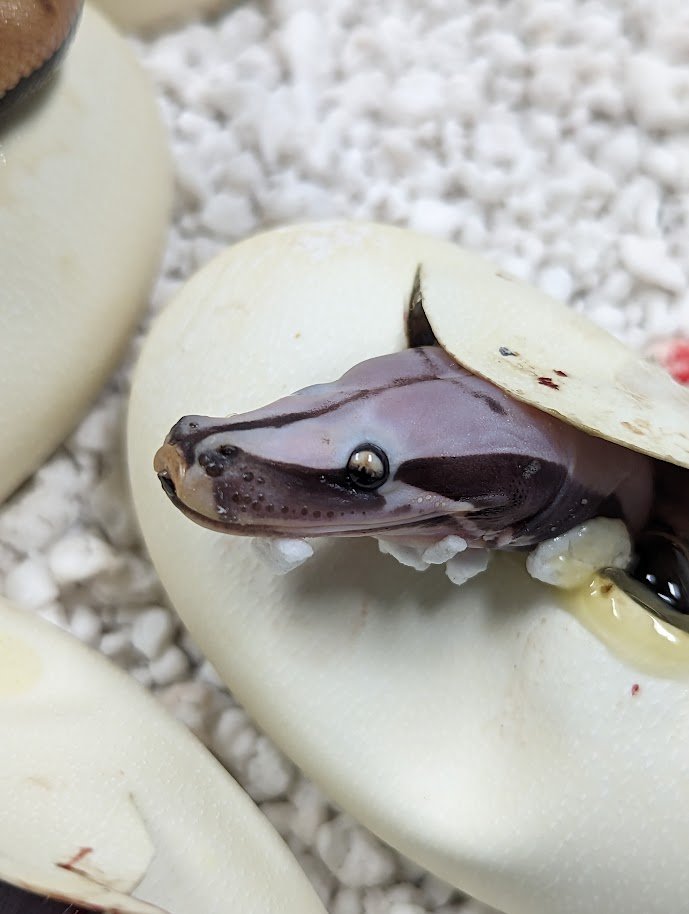Hey Everyone!
This is going to be an interesting post, so we hope you enjoy.
Whether you love them or hate them, scaleless Blood Pythons are here! This all started with a clutch years and years ago. We bred a Golden Eye that we produced from Redbull Line x GE, to a Batik 100% het T+. To our surprise the entire clutch, albeit small, was bizarre looking. We coined it the “Oddball” clutch. So, we decided to keep them all back. Raised them up slowly and bred two of the siblings together for the first time this year.
When working through a breeding process like this, we really never know what to expect. Could have been a one off thing, incubation error, or something else at play that caused these animals to look the way they do. So as we waited the 60 days for these babies to hatch, our brains were going every direction. The first two animals pipped on 6/11/2023 and like we normally do, we began to cut the rest of the clutch. What we found had us shocked! Albino Scaleless and Scaleless Blood Pythons! This was a result that we never once considered being possible and certainly was not our intention. But they are here now.
Scaleless snakes have appeared in Ball Pythons, Ratsnakes, Cornsnakes, and I am sure some other species. They do require a bit more care and attention to detail than their scaled counterparts. That being said, we have elected not to move forward with this project. After these animals are well-started, we plan to move the entire group and will only consider keepers who understand the specific care these snakes require.
They do have a scale on the tip of their noses and actually do have an egg tooth. They also have belly scales about half the length of their body. They strike no problem and seem to move around like any other snake. Time will tell how they do as they are offered their first meals and start to grow.
In the meantime, marvel at these pics and love them or hate them, it was wild to see these animals fully developed in their eggs.
UPDATE 6/18/2023: Unfortunately the two scaleless animals passed after 48 hours. While this is a small sample size, they do not appear to be viable.
GE x Redbull Line
Sire to Oddball clutch
Dam to Oddball clutch
Oddball clutch
Dam (from Oddball clutch) to Scaleless animals
Sire (from Oddball clutch) to Scaleless
Scaleless
Albino Scaleless
Scaleless
Albino Scaleless fresh out of the egg










